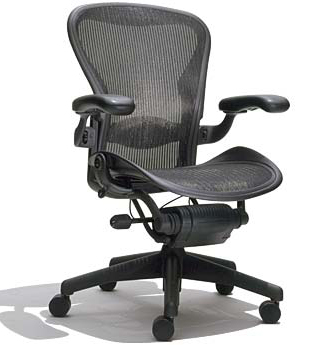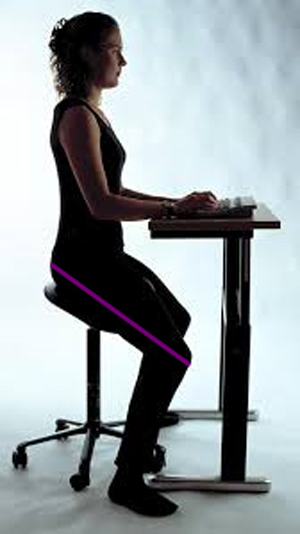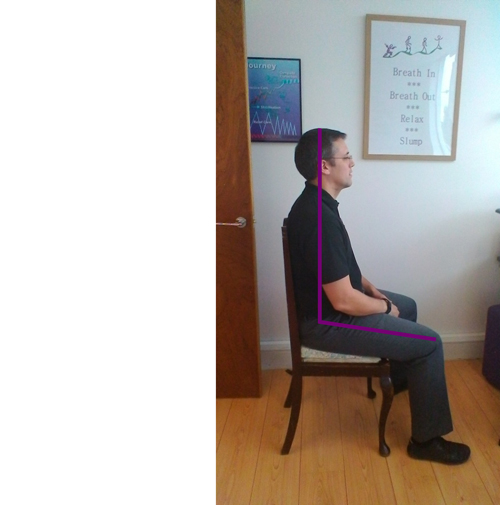Did Your Workplace Assessment Help? – Pain & Posture Wellness Centre
I’m in pain when I’m at my desk
Yet, I just had a workplace assessment. What’s going on?
Many of our patients note that their pain levels increase while they are sitting at their desk, be it at work or at home. Some state “I know I’m slouching at my desk”, or “I just spend too much time sitting in the same position”. Others comment that they just had a workplace assessment to fix their current chair / desk / screen setup because they previously experienced pain while sitting at work. Many say that they got the latest state-of-the-art office chair with seat tilts, lumbar supports, head supports, arm rests, and usually lots of cushioning. When we ask them if things are better now, they often respond “not really”, or “well, my low back has improved but now my neck hurts.”
What’s going on? Why are things still hurting even after a workplace assessment?
To us, these comments are red flags that there is a problem with the current seating arrangement. In this blog post we will walk you through the most common scenarios, easy solutions, and an overall explanation of what is most likely going on.
We are looking at our patients holistically: their bodies, their symptoms, and their environment
We have written HERE about how we assess our patients in a holistic way with Advanced Biostructural Correction™. This includes not only analysing and correcting any structural-mechanical faults we find in their spine, but also taking into consideration how they got into their current symptomatic state in the first place. This includes gathering information about any trauma they have had on their body throughout the course of their lifetime. For some, this includes falls and accidents or other physical trauma. These are usually examples of what people would consider “big” trauma. However, a million daily lifestyle choices can equally contribute towards spinal misalignments which, years later, may show up as back pain, neck pain, sciatica, headaches, or other complaints. So we like to play detective to work out how their bodies got into a state of pain in the first place, but also what may be causing unnecessary flare-ups or setbacks during their journey out of pain as they are undergoing ABC™ care. In other words, an integral part of what we do at our offices is to consider the person in their daily environment. Most of the time, the culprits are daily choices related to the way we sit, stand, and sleep.
In this post, we will specifically discuss sitting at work
One of our mottos is: “we are responsible for how you leave the office. You are responsible for how you come back.”. What do we mean by this? Each visit builds on the previous one in terms of how ABC™ makes structural changes to a person’s body. Throughout the course of care the body will improve structurally, mechanically, and functionally. Symptomatically, we also expect there to be changes. The kind of change we expect depends on the unwinding phase you are in at a given time. During “backward unwinds”, we expect to see symptom relief; during “forward unwinds”, we expect the body to unlock old injuries which can mean a temporary resurgence of old symptoms. We generally advise patients when they are entering such a phase, which typically lasts between 2 days and 2 weeks.
Unless you are in a “forward unwind”, we expect you to come back for your next visit feeling the same (or better) than you did when you left after the previous visit. Each time you leave, the way you leave is your “new normal”, and the next visit builds on this.
So if you come back and tell us that your pain flared up again while you were sitting at work, it raises a red flag for us. The pain wasn’t there when you left our office at the last visit. Nor was it there when you got up on this particular morning, nor was it there when you arrived at the office this particular day. It developed while you were sitting at your desk. This means your chair or your desk just messed you up. Incorrect seating can cause slight misalignments of the pelvis and spine which the body cannot self-correct. If this is the case, the body needs to twist up and compensate in other areas, for example up in the neck. The result is an achy back or neck at the end of the work day.
If we find that sitting at your desk may be a likely culprit for an avoidable flare-up in symptoms, we would like to help you amend the situation. Oftentimes, small changes will go a long way and will help your body progress steadily, without unnecessary set-backs which may prolong your care.
The easiest way for us to help you is if you let us help you. We may, for example, ask you to bring a picture of your current office chair. What we are looking for, specifically, is the shape of the seat. Is it bowl-shaped (not ideal)? A bucket-seat (not ideal but usually easily fixable)? Or flat (ideal)? What shape is the backrest? Again, flat would be ideal. A curved shape or a big lumbar support may not be ideal for your body.

seat and backrest not flat, usually not good

sitting with knees lower than hips: good

flat seat, flat backrest, seat wedge: good
We may ask you to bring a picture of yourself sitting in the chair, following these instructions: “breathe in, breathe out, let your body relax and slump”. Ask a co-worker to take the picture for us at the moment when you’re “relaxing and slumping”. We may also ask for a picture of you sitting at your desk with the desk and screen setup visible. We are looking for desk height, screen distance, etc.
Alternatively, we can set up a Skype session with you going over it while you are at your place of work
Often, patients find great relief when the seat is tilted the right way. Sitting with your knees lower than your hips is the anatomically correct way. It tilts your pelvis in the right way and stacks the bones in your low back correctly. The old advice about sitting with 90 degree angles at the pelvis, knees, and feet is outdated. A seat wedge automatically tilts your pelvis the right way. We have a variety of wedges available at our office, and they come in a number of different sizes so each person can find the one that’s right for them.
Some people may require a folded towel behind their back. Usually, if that’s the case, only a flat towel is required – rather than a big lumbar support, which may or may not be in exactly the right area for your body. Again, it may be a case of figuring out a custom support for your body – every person is slightly different. We have had patients who switched from ordinary office chairs or from all-bells-and-whistles chairs to a simple dining room chair with a flat seat and a flat back, and then put a seat wedge onto it. And the pain went away. What exactly is needed depends on each person individually.
Your desk should be of adequate height. This means your elbows should be at an angle that’s slightly bigger than 90 degrees when you are typing. You may need to raise up your keyboard and mouse to achieve this. Your eyes should be level with the middle of the screen. Very often, the screen sits on the desk itself – and usually that’s far too low! Stack some books or a box underneath or get a screen stand.
If you are in doubt or we find that going by pictures alone doesn’t bring the expected result, we can skype into your workplace to help you set up your chair and desk correctly.
What if I just had a workplace assessment?
Sometimes our patients tell us they just had a workplace assessment, which made a bunch of changes to their desk and gave them a new chair. In each case, we ask the following question: “did it make a difference?” If the patient is telling us “no, the pain is still there” – then there are a few possible scenarios:
- The assessment didn’t go far enough
- The assessment got some factors right but not others
- The assessment followed a standard one-size fits all approach rather than a customised approach for your body in particular
The assessment may, for example, have made a good change which caused the low back pain to get better, but introduced a new problem elsewhere and now the neck is hurting. The desk/screen height might have been corrected, but the new chair has a bucket seat which is throwing off the alignment of the pelvis. Or the assessment fixed the seating arrangement but now your keyboard or mouse is too low and your neck or arms hurt. These are just some examples of what we have seen happening.
It really is straight-forward: if we treated you and the pain got less and wasn’t there when you arrived at your office, but then flared up while sitting at your desk, the simple answer is that your desk or chair just messed you up. This is an undeniable fact, regardless of whether you just had a professional workplace assessment. If you are telling us the pain is there while you are sitting at your desk, something’s not right with your seating or desk arrangement.

What people typically overlook is that the amount of time spent sitting doesn’t have that much of an impact on symptoms. True, sitting is the worst position for the body to be in – it would be far better to get a standing desk, for example, and to get up and move frequently. But if a seat is incorrect, an adverse change to a person’s body structure can occur within minutes. You may only feel it after hours of sitting, but the adverse change itself would usually have happened within minutes. Pain or other symptoms show up as the body is compensating for the adverse change which it cannot correct by itself. This applies to sitting on unsupportive office chairs, dining room chairs, couches and settees, or in car seats, train seats, plane seats, or anything else that we can sit on.
If you are in pain while sitting down, the seat has just messed you up. If you get up from sitting and for the first few minutes feel like an old person, or it takes a few minutes of waddling around until the stiffness goes away, the seat has just messed you up. It shouldn’t hurt and it shouldn’t be hard to get up. Have a look at our section on sitting advice for more information.
If you find your pains and aches get worse while you sit at your desk, please get in touch and schedule a free consultation with one of our practitioners.



